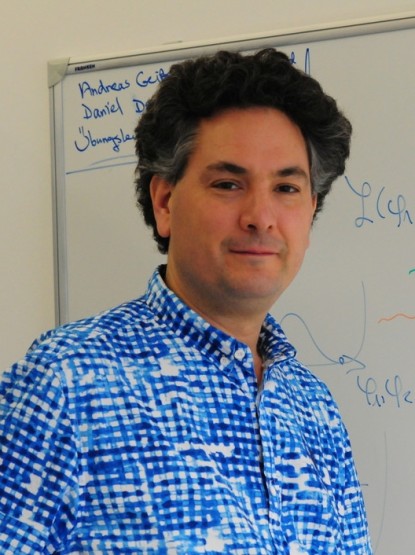Topology in Hot QCD
Topological properties of QCD play an important role in understanding the QCD vacuum structure, chiral and U(1)axial symmetry breaking, and the QCD phase diagram. And while the QCD topology and its effects on the vacuum structure are well understood under “ordinary” conditions, this is not the case for high temperatures, high densities, and high chemical potentials:
- temperatures T >3 Tpc, where Tpc ≈ 155 MeV is the pseudocritical temperature of QCD with physical quark masses and vanishing chemical potentials µB = µI = 0 (quark-gluon plasma)
- µB > 1 GeV with T = µI = 0
- µI higher than a few times the value which induces pion condensation µI = mπ/2 ≈ 70 MeV (large pion condensate).
Of course, topology under combinations of high temperature and chemical potentials, which occur throughout the QCD phase diagrams in Figure 1, are also not well under control.
We aim to better understand the various phases of strong-interaction matter at such extreme conditions, e.g., the role of chiral symmetry breaking and its restoration at high temperatures, as well as the (thermodynamic) nature of these phases and their phase transitions and critical points. Especially, we place great importance on the interplay of topology and topology changing transitions and the thermodynamics of QCD. Therefore, one of the main goals of our group is to analyze the topological susceptibility χ in full QCD under these extreme conditions.
With this in mind, one goal is to use lattice-QCD reweighting methods to analyze the topological susceptibility of QCD at temperatures up to and above 1 GeV, the highest temperature where axion cosmology is sensitive to the susceptibility. We have recently demonstrated how to do this within pure-glue (quenched) QCD. To achieve such temperatures in the unquenched case, we need first to understand the scale-setting for lattice (HISQ) 2+1+1 quark flavor ensembles out to lattice spacings more than a factor of 2 smaller than previously investigated. Then we need to determine how our reweighting techniques can be applied to systems with very small quark masses and the concomitant small Dirac eigenvalues, or to use quark-mass reweighting to evade simulations with small eigenvalues and achieve the required quark masses via extrapolation.
Another challenge is the incorporation of the bottom quark, which starts to become relevant at temperatures of 1 GeV. Performing scale setting with both charm and bottom quarks appears prohibitive, so we will investigate analytically the fermionic fluctuation determinant arising from a massive quark in the presence of a finite-temperature instanton (caloron). Heavy quarks with vacuum instantons and massless quarks with calorons have both been considered, but the combination has not.
Furthermore, we also take an interest in the impact of strong electromagnetic fields on the topology of QCD. For instance, the coupling between QCD topology and QED electromagnetic fields is needed phenomenologically to understand how the hypothetical axion interacts with electromagnetic fields. There are chiral perturbation theory predictions for these interactions in vacuum, but these could be verified on the lattice and extended to finite temperature.
Our research on topological properties of hot QCD and especially on the topological susceptibility is meant to not only further the understanding of the fundamental theory, but also to make important contributions to other fields such as cosmology, astronomy or the phenomenology of heavy-ion collisions. In cosmology, for example, χ sets the mass of the axion: m2ax = χ/f2PQ, where fPQ > 109 GeV is the scale of spontaneous breaking of the Peccei Quinn-symmetry (see “Axion Cosmology”). Furthermore, the early universe might have supported large lepton-flavor asymmetries with resulting large µB and µI. In astronomy one deals with strong-interaction matter under such extreme conditions in neutron star mergers, for example, or certain supernovae. Finally, heavy?ion collision experiments are conducted in several laboratories such as the Relativistic Heavy-Ion Collider, the Large Hadron Collider at CERN or future facilities in Japan, Russia, and Germany. Such collisions produce a quark-gluon plasma and thus allow for the investigation of the above areas of physics. In fact, the quark-gluon plasma produced in heavy-ion collisions is very similar to that of neutron star mergers in terms of temperature and baryon chemical potential. Also, off-central heavy-ion collisions are an excellent tool for measuring the chiral magnetic effect, the strong B-field resulting from the non-interacting ions passing by each other.




